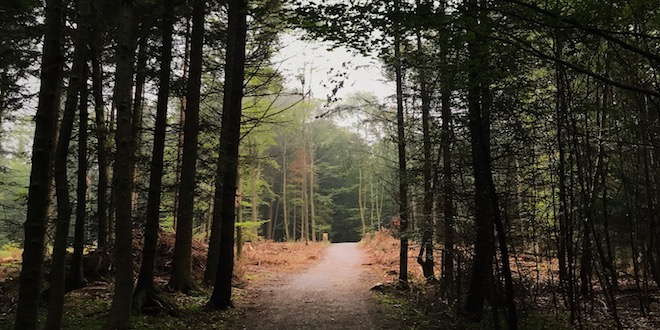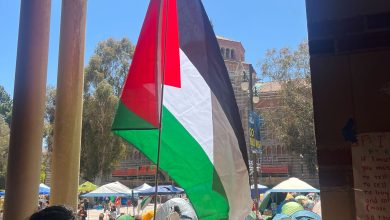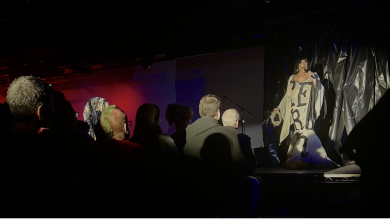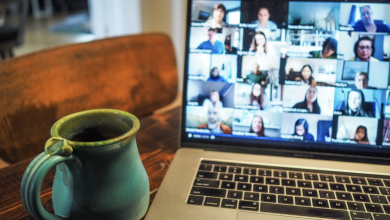The Healing Forest On Fire

The 2019 Amazon rainforest wildfires were first detected by Brazil’s National Institute for Space Research (Instituto Nacional de Pesquisas Espaciais, INPE) in June and July of 2019. Since then, reports have shown 74,000 fires in the Brazilian Amazon, burning 1.5 million hectares in Bolivia and over 500,000 acres of forest. Beyond the widespread concerns of deforestation and carbon emissions, Dr. Mark J. Plotkin called people’s attention to the endangered, isolated, and uncontacted tribes during his presentation at the Plants Worlds Ethnobotany Seminar Series’ first lecture.
Supported by UCLA Life Sciences, Semel Healthy Campus Initiative Center, Traditional Medicinals, and the Institute for the Preservation of Medical Traditions, this lecture took place on Oct. 22 in the Neuroscience Research Building. Titled “The Healing Forest: Plant Medicine, Isolated Tribes, & Climate Change,” the lecture invited ethnobotanist Mark Plotkin, and the Senior Manager of Mapping and Programs Support, Brian Hettler, from the Amazon Conservation Team to share their stories about ethnobotany.
Ethnobotanists are scientists who focus on the relationship between people and plants, often with a concentration on medicine. In Dr. Plotkin’s words, they “work in rainforests to document how people use local plants.” Over the years, he worked with and later succeeded his mentor Richard Evans Schults (“the father of ethnobotany”), whose journals and fascinating lifelong discoveries are preserved at Harvard and can be accessed through an interactive map named The Amazonian Travels. Doctor Plotkin became fascinated by uncontacted people’s ability to cure diseases which western technology cannot, such as leishmaniasis, by using palm trees’ leaves and plants alike. However, he pointed out that those techniques, embedded within indigenous cultures, are disappearing much faster than the Amazon forest which has long been undermined by trade and devoured by fire.
To demonstrate indegenous people’s profound understanding of plants, Dr. Plotkin shared a personal anecdote about his foot injury from a climbing accident. Immediately after his injury, he went to the doctor and received a variety of treatments: heat, ice, aspirin, narcotic painkillers, anti-Inflammatories, and cortisone shots. Despite these efforts, none of the methods worked for him. He kept limping until he met a shaman in the northeast Amazon several months later, who cured him with the fern of a palm tree. The shaman applied the fern to Dr. Plotkin’s foot and made tea from the fern for him to drink, and his foot’s pain disappeared for seven months.
The compounds that uncontacted people of the Amazon rainforest use for medical purposes are not only limited to plants but also include other living beings. Doctor Plotkin continued to tell the story of the great shaman, Natala, who applied ants poured out from a chopped piece of dry wood to the inside of his elbow. He let the ants bite him and explained to Plotkin that this is how he treats his arthritis. A group of people from one of the tribes rescued Dr. Plotkin’s late colleague, Loren Mclntyre, who found that they used green monkey frogs from the palm tree baskets as hallucinogenic drugs. The hallucinogens and entheogens in that species are, in fact, currently revolutionizing western medicine by treating PTSD, depression, and schizophrenia.
Dr. Plotkin used concrete examples to show that uncontacted peoples, refuting common misunderstandings, possess wisdom that is often times astonishing to behold. Furthermore, the biodiversity in species, as well as cultures, demonstrates potential for future groundbreaking discoveries in western medicine, but only if it survives the havoc from capitalistic production and consumerism.
Amazonian indigenous people’s traditional territories have been increasingly entrenched and permanently altered by trade and transport, oil and gold mining, and logging. Dr. Plotkin pointed out that some previously uncontacted tribes first came into contact with the outside world through these processes, and as a consequence, were afflicted by external bacteria and dislodged by machines and fallen forest. Furthermore, the most recent Amazon wildfire caused burning to 131 indigenous sites, potentially destroying more than a few uncontacted tribes’ homes.
Image Source: https://www.youtube.com/watch?v=d3dLjAl7v10
To protect isolated tribes, Dr. Plotkin calls for actions that are culturally sensitive. That is to work with contacted tribes to promote sustainable management, expand indigenous reserves, and have them map out their own landscape, which provides tools to communicate and negotiate with the outside world. In this way, the indigenous people in the amazon rainforest can manage to map out the area of the uncontacted tribes without incurring any disturbance, and meanwhile, raise public consciousness about their existence, so oil companies and governments alike make better informed decisions. The Amazon Conservation Team has partnered communities across 14 geographic regions with 80 million acres of forest mapped out ethnographically.
Ethnobotanical wonders have been proven to not only function as novelties, but may also fundamentally revolutionize and advance modern medicine. However, one must realize that not only are our medical achievements profoundly intertwined, but also the future of our civilization and people. Climate change not only changes the Amazonian landscape, but also tho ecology of California, Colorado, Arizona, New Mexico and many other places in the world. The dire situation resulting from climate change implores one to ponder whether the burning of the Amazon foreshadows the future of humanity and our current consumption habits. As Dr. Plotkin’s final comment in the lecture went, “Their future is our future. If the climate changes, change it for the good.”




